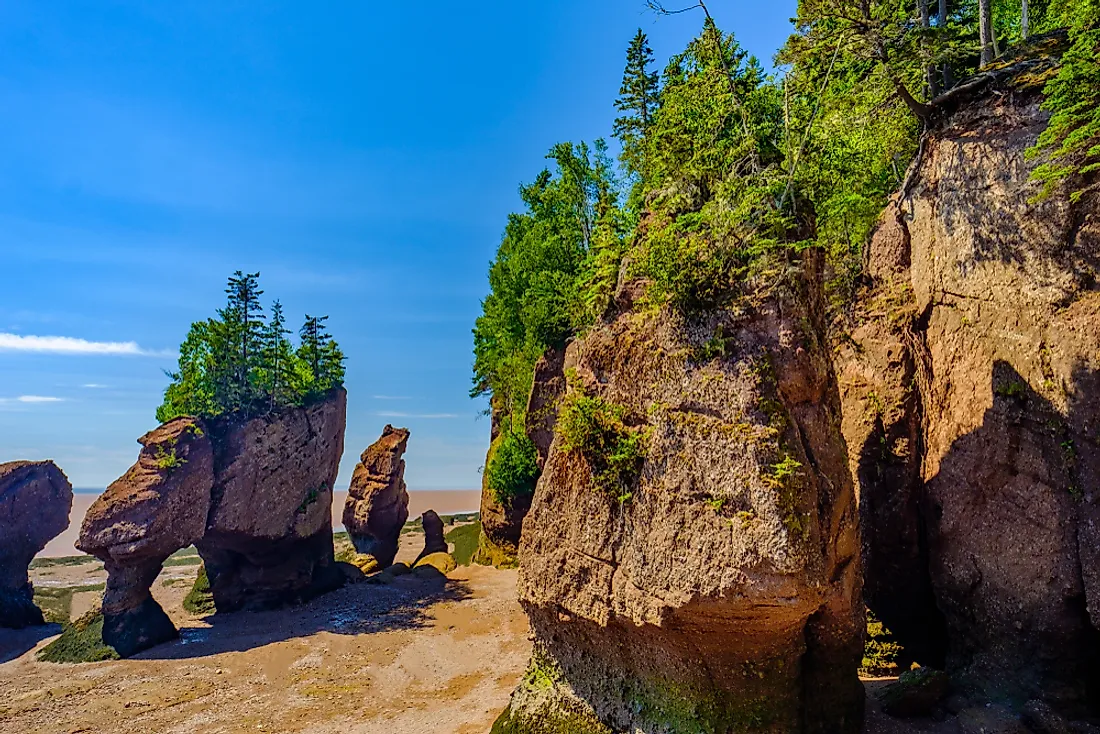What Is Unique About The Bay of Fundy?

The Bay of Fundy is located between the Canadian provinces of Nova Scotia and New Brunswick with a small portion extending into the state of Maine. The bay is managed by the Ducks Unlimited and the Nature Conservancy of Canada. The most popular Port city of the Bay of Fundy in Saint John. It was been listed as one of the seven wonders of North America. The bay’s history, geography, flora, and fauna among many other aspects qualified it to be included in the final list of the seven wonders of North America.
Habitat
The Bay of Fundy lies in the Fundy Basin, a rift valley that was formed due to volcanic activities. The bay has several sub-basins. The upper part is divided into the Chignecto Bay and the Minas Bay. The Chignecto Bay is split into Cumberland Basin and Shepody Bay. It also has several islands such as Grand Manan, Campobello Island, Deer Island, Moose Island and Passamaquoddy Bay. The rivers that empty into the Bay of Fundy include Big Salmon River, Little Salmon River, Saint John River, Avon River, Salmon River, Farrell River, and the Cornwallis River. Another important physical feature of the bay is the Hopewell Rock Formation, on which the famous flower-pot rock formation is located.
Uniqueness
The Bay of Fundy has one of the highest tides in the world. The unique shape of the bay and the large amount of water received in it receives are responsible for the high tides. The tides sometimes go as high as 56 feet, the highest recorded tidal range in the world. In 1975, The Guinness Book of World’s Record declared the Burntcoat Head in Nova Scotia to have the highest tides. The bay is also known for the high cliffs, caves and breathtaking rock formations. The geological composition of the bay is also quite unique. There are many fossils that have been discovered there. These fossils include dinosaurs of the Triassic age and other minerals. The marine life in the bay is also unique. The bay creates a conducive habitat for some species of whales and sea-birds that are unique to the bay. There are over 12 species of whales living in the Bay of Fundy.
Tourism
The Bay of Fundy receives tourists from different parts of the world every year. The uniqueness and the beauty of the bay keep the flow of tourists consistent. Whale-watching is one of the popular activities in the bay. There are also excellent hiking trails in Fundy. Other popular activities in the Bay include sea kayaking, boat riding, beach exploration, and tidal rafting expeditions. Tourists visiting the bay get the opportunity to watch the highest tides in the world twice a day. There are a number of parks and protected areas in the Bay of Fundy. The parks in the bay include Fundy National Park, and Blomidon Provincial Park and Cape Chignecto Provincial Park. The Canadian Wildlife Service conserves several wildlife areas in the bay. Some of the islands on the bay are also scenic.
Threats
The Bay of Fundy is largely a protected area with several parks preserving the bay. However, the shipping activities and the many ferry services traversing the bay poses several challenges. The Port of Saint John which gives access to oil refinery and paper industry has been accused is a major challenge to the preservation of the bay. Wastes from industries sometimes find their way to the rivers and eventually to the bay. Tourists who visit the bay have been accused of littering the park and throwing items into the water, especially at the Reversing Falls.
What Is Unique About The Bay of Fundy?
| Rank | Unique Places Entity |
|---|---|
| 1 | Description |
| 2 | Habitat |
| 3 | Uniqueness |
| 4 | Tourism |
| 5 | Threats |











